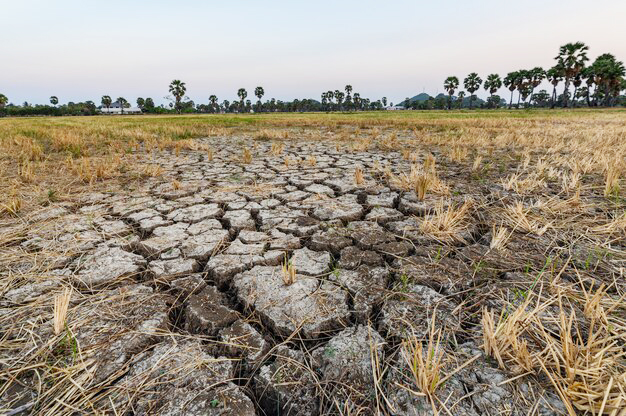As mundane as the substance may seem, soil is a complex, dynamic ecosystem unto itself. Even small changes in temperatures and precipitation can have a major impact on soil’s ability to retain moisture and hold itself together. As soil dries and breaks apart, these physical changes accelerate, turning living soil into dead dirt, silt, and sand. Beyond the immediate implications for agriculture and food webs, this desertification can lead to large-scale natural disasters, such as dust storms and landslides.
Increased temperatures and climate-change induced droughts have increased demand for ways to prevent soil fracturing. However, common stabilizers like concrete and lime have their own impacts on the ecosystem; a more sustainable solution is necessary to maintain this critical natural infrastructure.
Pania Newell, associate professor in the John and Marcia Price College of Engineering’s Department of Mechanical Engineering, has one in mind: biopolymers.

As long strands of repeating chemical blocks, polymers can make for powerful adhesives. Biopolymers, ones made by biological cells, are ubiquitous; examples include starch and xanthan gum, common food additives used to bind and thicken wet ingredients. Infused through the sponge-like pores of soil, biopolymers could help prevent fractures from forming, and potentially help reverse existing damage.
Biopolymers, however, can also be highly water absorbent, risking further fractures as they expand or otherwise changing the soil’s hydrological qualities. With so many different properties at play, at scales ranging from the microscopic to the mountainous, multiple scientific questions must be answered before biopolymers can be used for the remediation of climate-related damage.
“While these remarkable compounds have proven effective in stabilizing natural soils,” Newell says, “our research looks into a critical question: Can biopolymers serve as a solution for soils fractured by the impacts of climate change? The prospect is akin to deploying nature’s own remedy to repair the damage and protect the soil against further fractures.”
Newell and San Diego State University’s Marta Miletic have received a $800,000 grant from the National Science Foundation (NSF) to study the complicated mechanical interactions involved in this approach, enabling the development of soil-stabilizing biopolymers with the right mix of properties.
The collaboration is among the first to be funded through the NSF’s CiviL Infrastructure research for climate change Mitigation and Adaptation (CLIMA) program. These projects enable multidisciplinary teams of researchers to work together to address challenging issues. Civil infrastructure investments are among the largest capital investments and a major component of the global economy.
“While infrastructure is designed to be resilient in a natural disaster, climate change brings new challenges, such as increased flooding and higher temperatures, and reinforces the need to reduce greenhouse gas emissions from infrastructure,” said Daniel Linzell, director of the NSF Division of Civil, Mechanical and Manufacturing Innovation (CMMI). “This NSF investment will help our nation develop new solutions for climate adaptation and mitigation in the design, construction and operation of current and future civil infrastructure.”
Newell and Miletic met through the Engineering Mechanics Institute Conference and their involvement with EMI-Poromechanics committee facilitated their collaborations and their complementary expertise made it clear they would be strong partners in the CLIMA grant.
“Our research team has the opportunity to pioneer innovative numerical and experimental methods for exploring the impact of biopolymers in fractured soil,” Newell says. “This has the potential to make significant contributions to our understanding of climate change from a foundational scientific perspective.”
Newell and Miletic’s project brings not only both civil and mechanical engineering departments together, but also an R1 and R2 institution, highlighting that research progress isn’t bound by classification levels. San Diego State University is also a minority serving institution, adding to the strong diverse team of researchers that will address this interdisciplinary issue.
“This project will be a great opportunity for students from both institutions to work together,” says Newell. “Bringing together students from Mechanical Engineering and Civil Engineering will allow them to learn from one another and realize that in education, there are no boundaries. Many of our challenges today span across multiple disciplines, making this collaborative experience invaluable.”
Newell, Miletic, and their labs will be working on this topic over the course of the next three years. You can learn more about Newell’s work at the Integrated Multi-Physics Laboratory website.